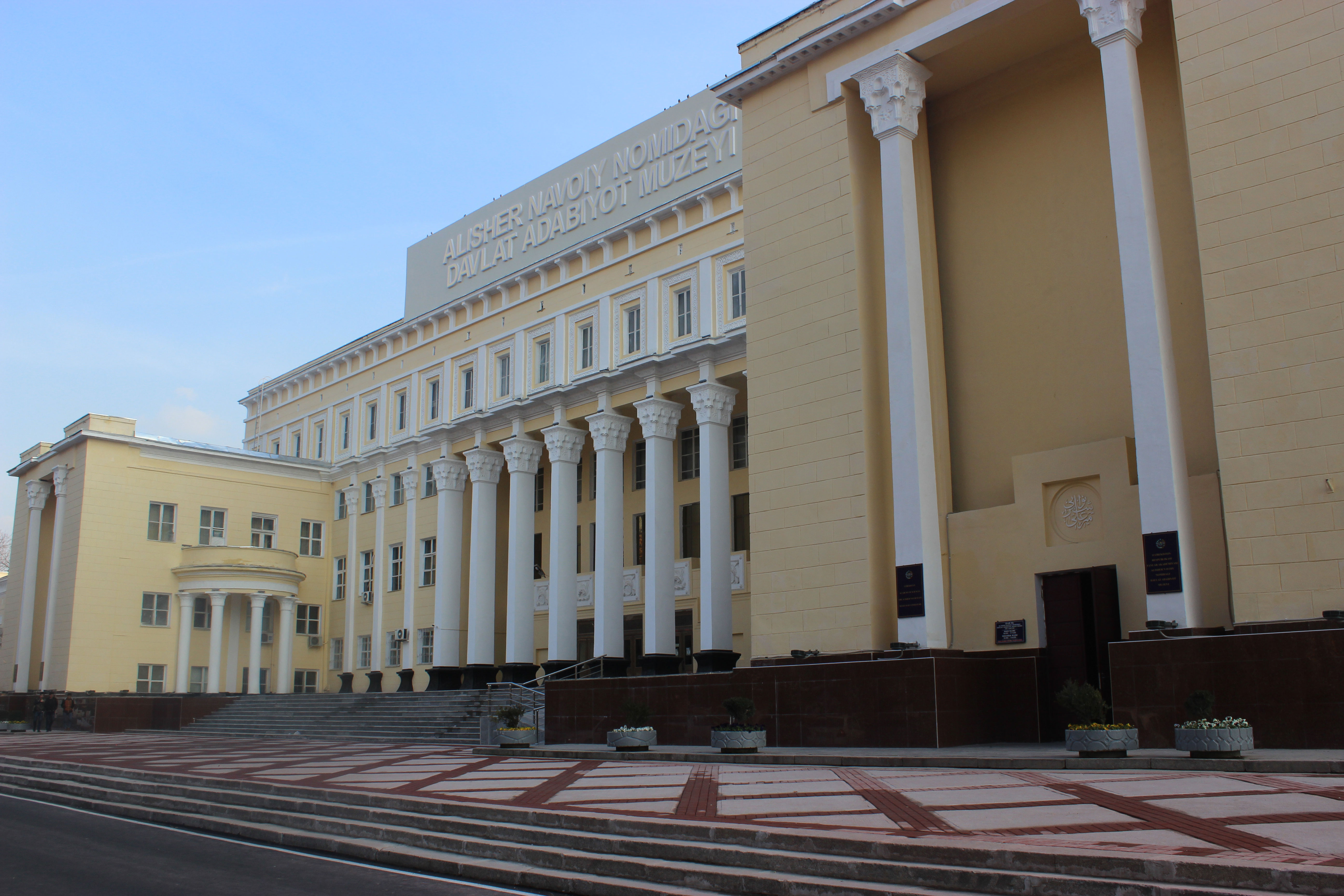Exposition
Department of exoplasia
The 1st Department
Oral folk art - folklore
Oral folk art is one of the most ancient, rich, diverse foundations of the spiritual heritage of our people. During the period of Independence, much attention is paid to oral folk art, its performers, collectors, researchers and publishers. They are demonstrated
 through the display of various exhibits: things, details, photos, paintings, vitality of ancient folklore traditions in today's live performance.
through the display of various exhibits: things, details, photos, paintings, vitality of ancient folklore traditions in today's live performance.
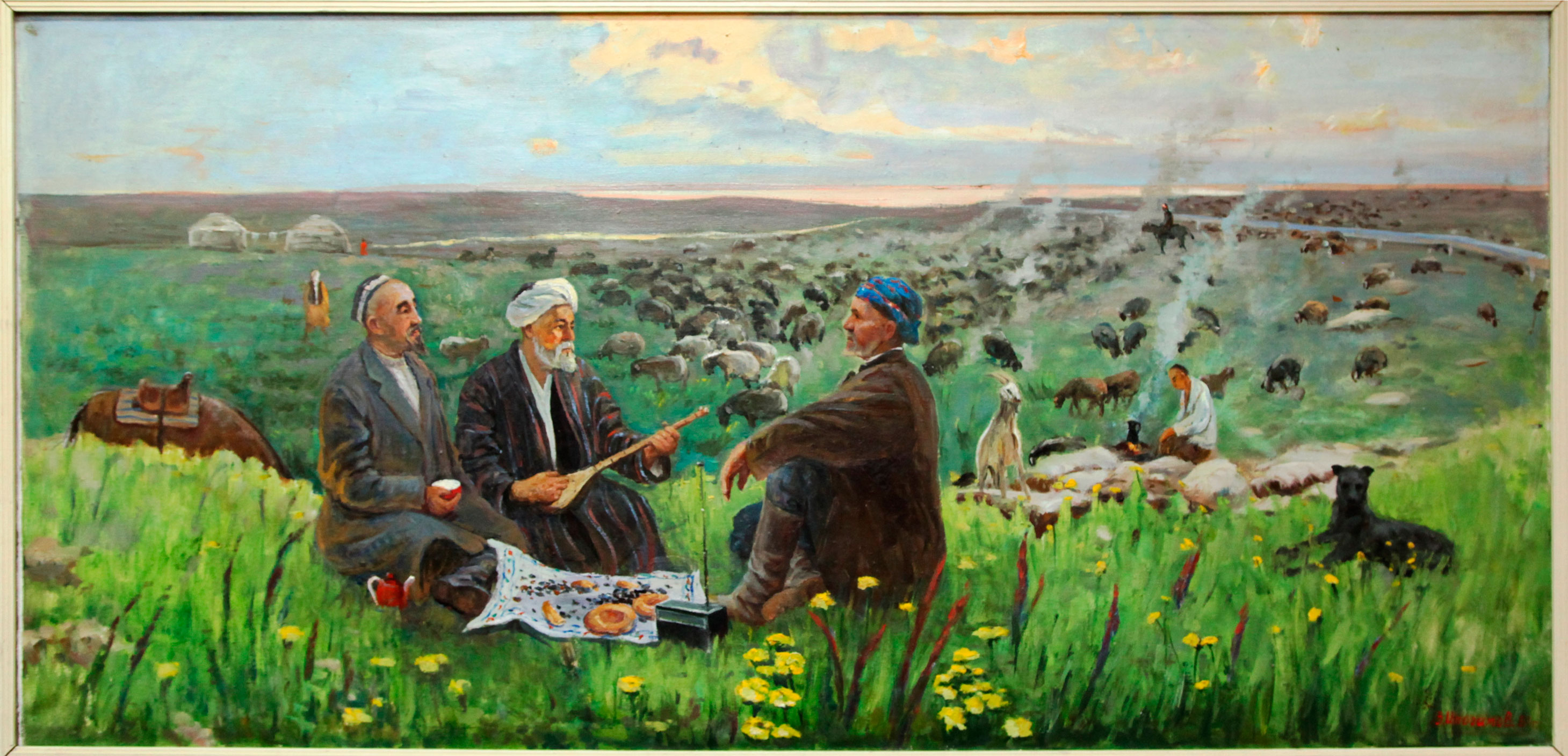 This Department shows the great attention paid to oral folk art by the government, decisions and resolutions aimed at its development and elevation, documents related to their performance.
This Department shows the great attention paid to oral folk art by the government, decisions and resolutions aimed at its development and elevation, documents related to their performance.
 There are handwritten samples of such folk epics as "Alpamysh", "Gora oglu", "Han Dalli", "Rafsanjan",
There are handwritten samples of such folk epics as "Alpamysh", "Gora oglu", "Han Dalli", "Rafsanjan",
 portraits of people's artist Fazil Yuldash, Irgas Djumanbulbul, Mohammed oglu Hamrad Polkan, paintings to the Dastan Alpamysh, family trees of “Bakhshies” (bakhshi is the traditional singer of national dastans), the print edition of samples of folk art as dumbira, photos of folklorists exhibited.
portraits of people's artist Fazil Yuldash, Irgas Djumanbulbul, Mohammed oglu Hamrad Polkan, paintings to the Dastan Alpamysh, family trees of “Bakhshies” (bakhshi is the traditional singer of national dastans), the print edition of samples of folk art as dumbira, photos of folklorists exhibited.

Department II:
Ancient inscribed stone monuments ( From the early period to the XI century)
During this period, the development of science and literature continues in Central Asia, resulting in a certain revival in cultural life.
 This Department demonstrates the replicas of ancient works on the stone, excerpts from these texts, samples of fine arts,
This Department demonstrates the replicas of ancient works on the stone, excerpts from these texts, samples of fine arts,
 literary heritage of the great Abu Raihan Biruni, Al-Kharezmi, Ahmad Fergani, Mahmoud Koshgari, Yusuf has Khodjib, Ahmad Yugnaki, Abu Nasr Farabi, Abu Mansur Dakiki and others, who left an indelible mark on the history of world culture and science of this period.
literary heritage of the great Abu Raihan Biruni, Al-Kharezmi, Ahmad Fergani, Mahmoud Koshgari, Yusuf has Khodjib, Ahmad Yugnaki, Abu Nasr Farabi, Abu Mansur Dakiki and others, who left an indelible mark on the history of world culture and science of this period.

Department III:
Literary and written monuments of IX-XII centuries
In this Department demonstrates the manuscript heritage, lithographs, unique documents, paintings of Imam al-Bukhari,
 Abu Musa al-Termizi, Imam Ghazzali who worked in Uzbek, Arabic, Persian-Tajik languages, and performance that Yusuf khass Hadjib and Mahmud Kashgari, Mahmud Zamakhshari, Sabir Termizi, Ahmad Yasawi, Hakim Sanai and other creators have left a deep mark in the history of Islam and literature.
Abu Musa al-Termizi, Imam Ghazzali who worked in Uzbek, Arabic, Persian-Tajik languages, and performance that Yusuf khass Hadjib and Mahmud Kashgari, Mahmud Zamakhshari, Sabir Termizi, Ahmad Yasawi, Hakim Sanai and other creators have left a deep mark in the history of Islam and literature.

Department IV:
Literature in the first quarter of the 13-14th centuries
This department is devoted to present important scientific literary property which was created in the territory of Uzbekistan and Central Asia. Such as "Kitabi Zhumzhuma" by Husam Katiba (1369/1370), "Nakhzhul Farodis" by Ali ibn Mahmoud (the 13-14th centuries).
 As the sample of Prose art, Uzbek literature in the 14th century, "Kissai Rabguzi" by Ragbuzi, is the sources and graphic materials of life, Kutba, Sayfi Sara, Hafiza Harezmi, Sayyida Kasimi, Lutfi, Haidar Harezmi who were figured prominently role in the life of literature in the 13-15th centuries are placed in this Department.
As the sample of Prose art, Uzbek literature in the 14th century, "Kissai Rabguzi" by Ragbuzi, is the sources and graphic materials of life, Kutba, Sayfi Sara, Hafiza Harezmi, Sayyida Kasimi, Lutfi, Haidar Harezmi who were figured prominently role in the life of literature in the 13-15th centuries are placed in this Department.
 And also samples of texts are perfomed by dastans of Kutba, Harezmi, Sayfi Sara, and Hamid Balkhi's (Durbek), Gadoi, Atoi, Sakkoki, Said Ahmad, Hodzhandi and Harezmi's "Mukhabbatnama" are analyzed.
And also samples of texts are perfomed by dastans of Kutba, Harezmi, Sayfi Sara, and Hamid Balkhi's (Durbek), Gadoi, Atoi, Sakkoki, Said Ahmad, Hodzhandi and Harezmi's "Mukhabbatnama" are analyzed.
Department V:
Department of literature in Timur dynasties (end of the 14th and 15th century)
The Department reflects literatures and life of Timuriys and Alisher Navoiy.
 The exposition department performs literature of the period Timur which is on the second floor of the museum is rich. The exposition begins with the map of the state of Timur and the model of a family tomb Timur dynasties. The card gives complete idea of the territorial scale of the state of Timur.
The exposition department performs literature of the period Timur which is on the second floor of the museum is rich. The exposition begins with the map of the state of Timur and the model of a family tomb Timur dynasties. The card gives complete idea of the territorial scale of the state of Timur.
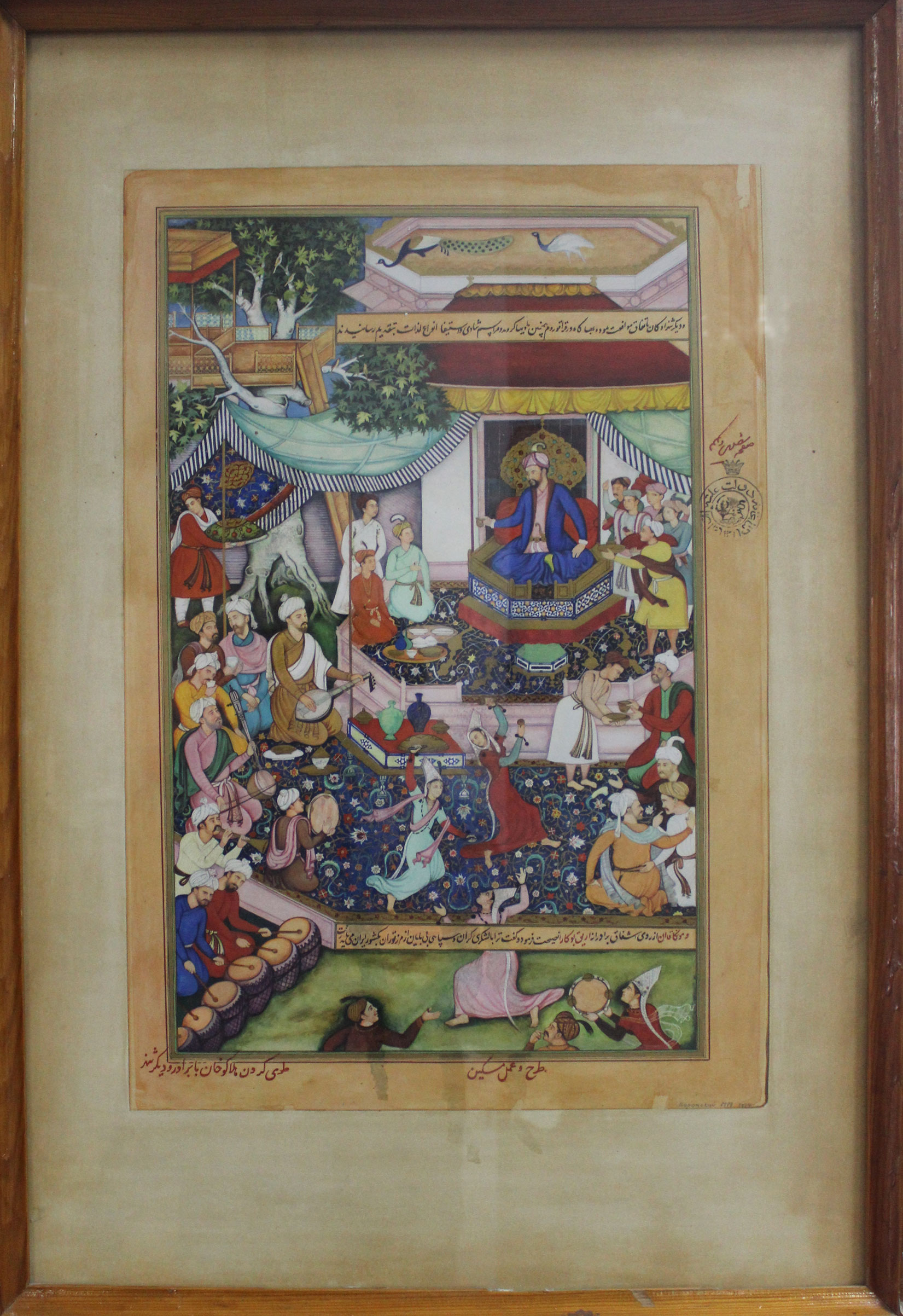 "Gur Emir" is known as a historical architectural monument in the world. There is exhibited well-known portrait of Alisher Navoiy by the famous artist M. Kaydalov (1947) at this department. there is a model of its observatory and the copy of a wall panel of a historical monument of Afrasiyab in Mirzo Ulugbek's hall.
"Gur Emir" is known as a historical architectural monument in the world. There is exhibited well-known portrait of Alisher Navoiy by the famous artist M. Kaydalov (1947) at this department. there is a model of its observatory and the copy of a wall panel of a historical monument of Afrasiyab in Mirzo Ulugbek's hall.
 In this department researches, fragments from works, the edition of books of poets who created in the first half of the 15th century are located.
In this department researches, fragments from works, the edition of books of poets who created in the first half of the 15th century are located.
Department VI:
The life and creativity of Alisher Navoiy:
In this department exposition materials are devoted to life and activity of Alisher Navoiy. In the hall of mentors portraits and fragments from works by predecessors of Navoiy who wrote on Persian and Turkic languages are placed. In the hall of lyrics of Navoiy, the wall manuscript of Chinghiz Akhmarov shows samples of lyrical heroes of the poet.
 The first piece of the known poem by Navoiy is written by the poet Charkhi as a great handwriting with Arab letter integrally intertwine with these images. The Hamsa hall matters to the person according to works of the poet. In this hall the wall panel of the artist T. Sajdullayev devoted to heroes of dastan of Hamsa is located. Besides, the model of applied folk art, a unique national carpet with the image of heroes of the poet is exhibited here. Fayzullayev for creation of national color of the period of life of Navoiy, created from a tree of a pandzhar (partition) without using uniform nailing also glue.
The first piece of the known poem by Navoiy is written by the poet Charkhi as a great handwriting with Arab letter integrally intertwine with these images. The Hamsa hall matters to the person according to works of the poet. In this hall the wall panel of the artist T. Sajdullayev devoted to heroes of dastan of Hamsa is located. Besides, the model of applied folk art, a unique national carpet with the image of heroes of the poet is exhibited here. Fayzullayev for creation of national color of the period of life of Navoiy, created from a tree of a pandzhar (partition) without using uniform nailing also glue.
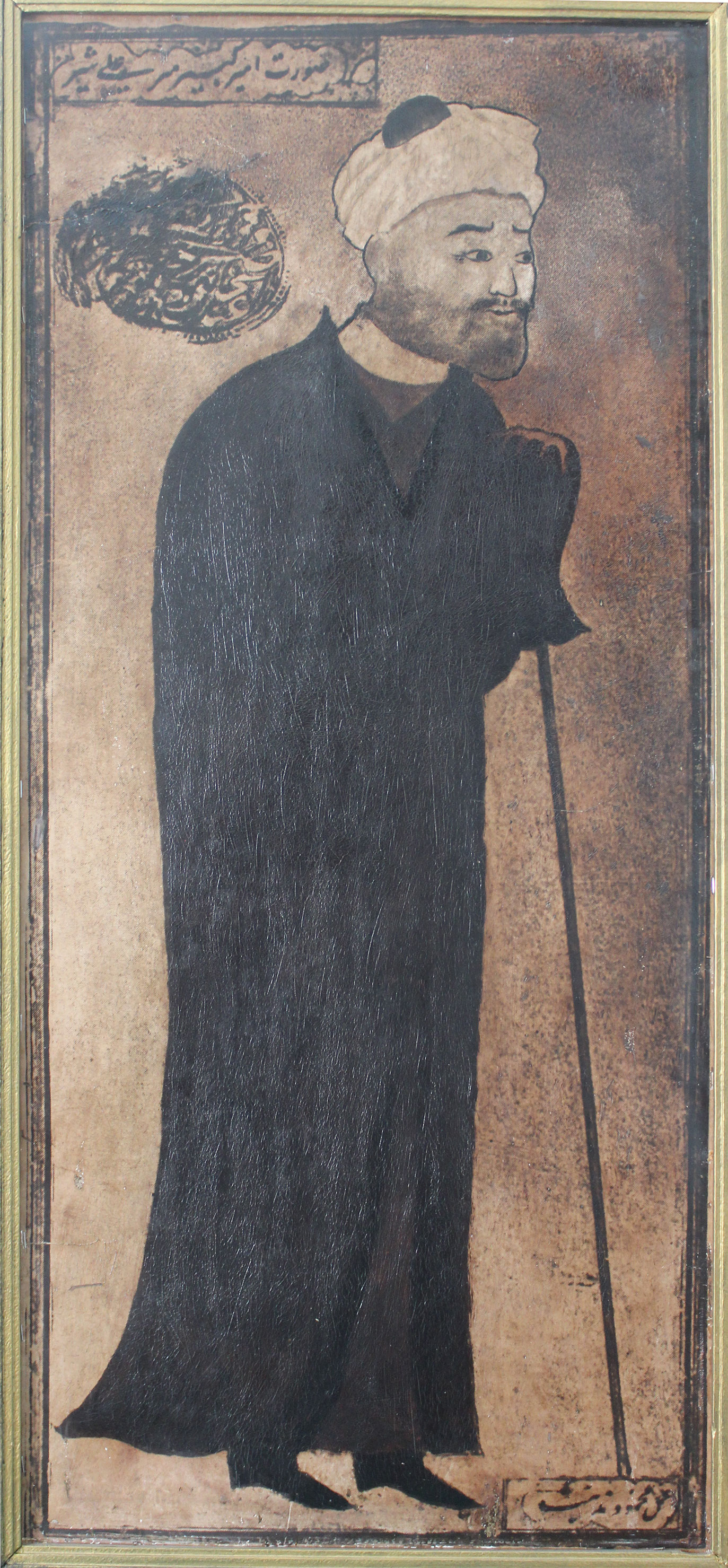 For display of a house interior, in the neighboring room the painted ceiling, wall shelves, the “hontakhta” are created. The next hall is devoted to reflection of public work of Alisher Navoiy. There are the pictures of artists showing participation of the poet in construction of buildings located. In this hall, Navoiy portrait of the famous painter (15th century) Mahmoud Muzakhkhiba (the copy from a miniature) and also skillfully calligraphy the names of works of the poet written by the prof. H. Suleymonov on Arab and Cyrillics is shown. The next hall shows the last years of life of Alisher Navoiy.
For display of a house interior, in the neighboring room the painted ceiling, wall shelves, the “hontakhta” are created. The next hall is devoted to reflection of public work of Alisher Navoiy. There are the pictures of artists showing participation of the poet in construction of buildings located. In this hall, Navoiy portrait of the famous painter (15th century) Mahmoud Muzakhkhiba (the copy from a miniature) and also skillfully calligraphy the names of works of the poet written by the prof. H. Suleymonov on Arab and Cyrillics is shown. The next hall shows the last years of life of Alisher Navoiy.
 It is the picture showing (the last meeting) as Alisher Navoiy meets from a military campaign of Sultan Husayn Baykaro and also the model of the mausoleum of the poet in the city of Herat.
Besides there is a card which shows world fame of the great poet, the cities where are published his works and its manuscripts are stored.
It is the picture showing (the last meeting) as Alisher Navoiy meets from a military campaign of Sultan Husayn Baykaro and also the model of the mausoleum of the poet in the city of Herat.
Besides there is a card which shows world fame of the great poet, the cities where are published his works and its manuscripts are stored.
 Then the hall is founded by gifts to the Literary museum follows. They are unique things, gifts from all over the world. In the end of the exposition devoted to life and works of the poet the wall carving on a gancha where Alisher Navoiy sayings are quoted in various languages is placed.
Then the hall is founded by gifts to the Literary museum follows. They are unique things, gifts from all over the world. In the end of the exposition devoted to life and works of the poet the wall carving on a gancha where Alisher Navoiy sayings are quoted in various languages is placed.
Department VII:
Literature of the period of Zahiriddin Muhammad Babur and Babur dynasties
In this department, the original role of Zahiriddin Muhammad Babur in culture, literature and poetry of the Medieval East, as a writer, poet, scholar, prominent statesman and skillful military commander, is fully revealed.
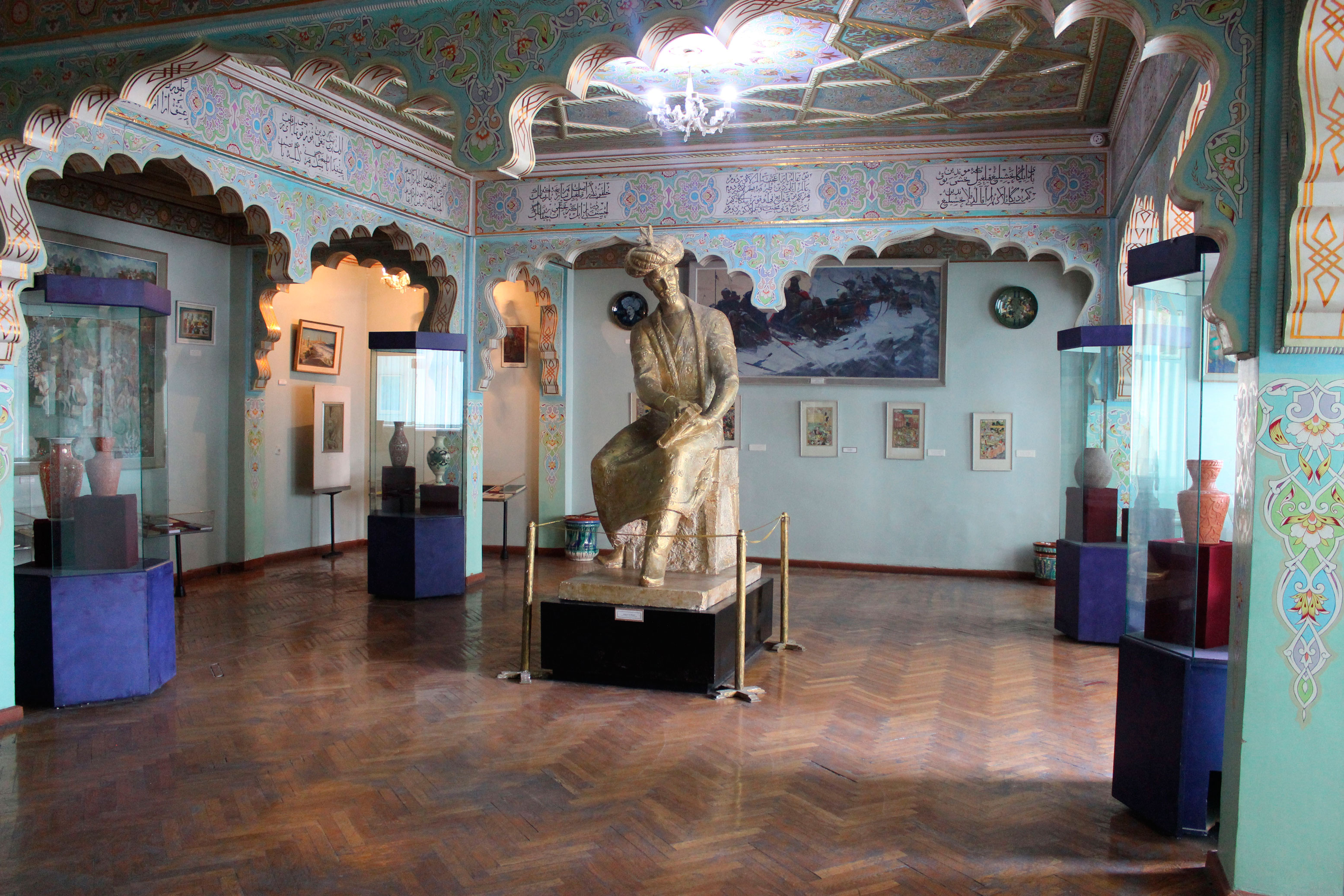 In the exposition, Babur's life is revealed by the fact that at the age of 12 he became the king of the Fergana region, fought for power, fought with Shaibanihan, went to Afghanistan, then occupied India,
In the exposition, Babur's life is revealed by the fact that at the age of 12 he became the king of the Fergana region, fought for power, fought with Shaibanihan, went to Afghanistan, then occupied India,
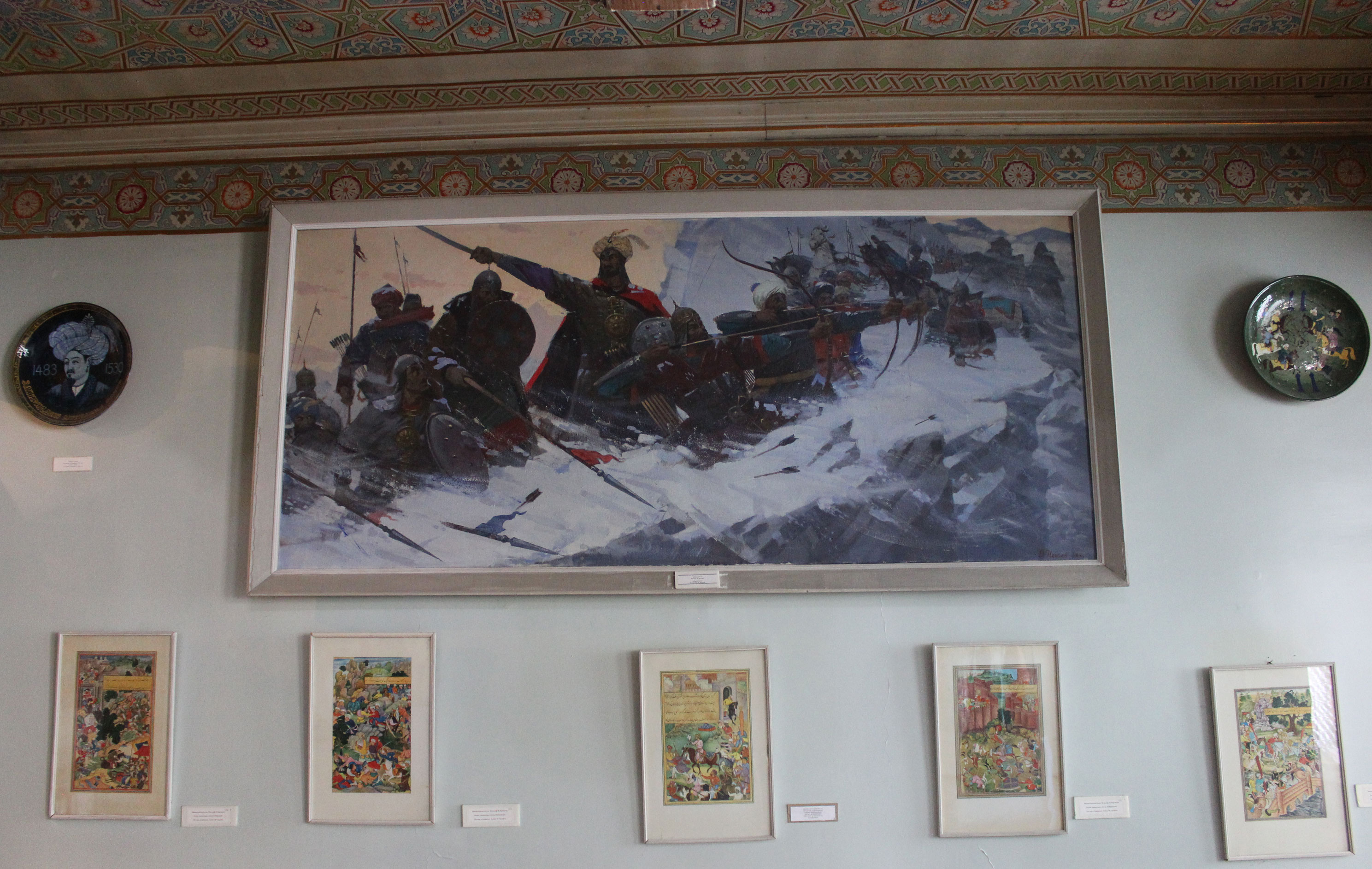 founded the Great Babur Empire, the chronology of Babur’s life (Babur’s encyclopedia, 660-669 .), genealogy of the Babur dynasty (B.E.50 p.). The exposition is enriched with the genealogical tree of Baburids and Shaibanids, miniatures to “Baburname”.
founded the Great Babur Empire, the chronology of Babur’s life (Babur’s encyclopedia, 660-669 .), genealogy of the Babur dynasty (B.E.50 p.). The exposition is enriched with the genealogical tree of Baburids and Shaibanids, miniatures to “Baburname”.
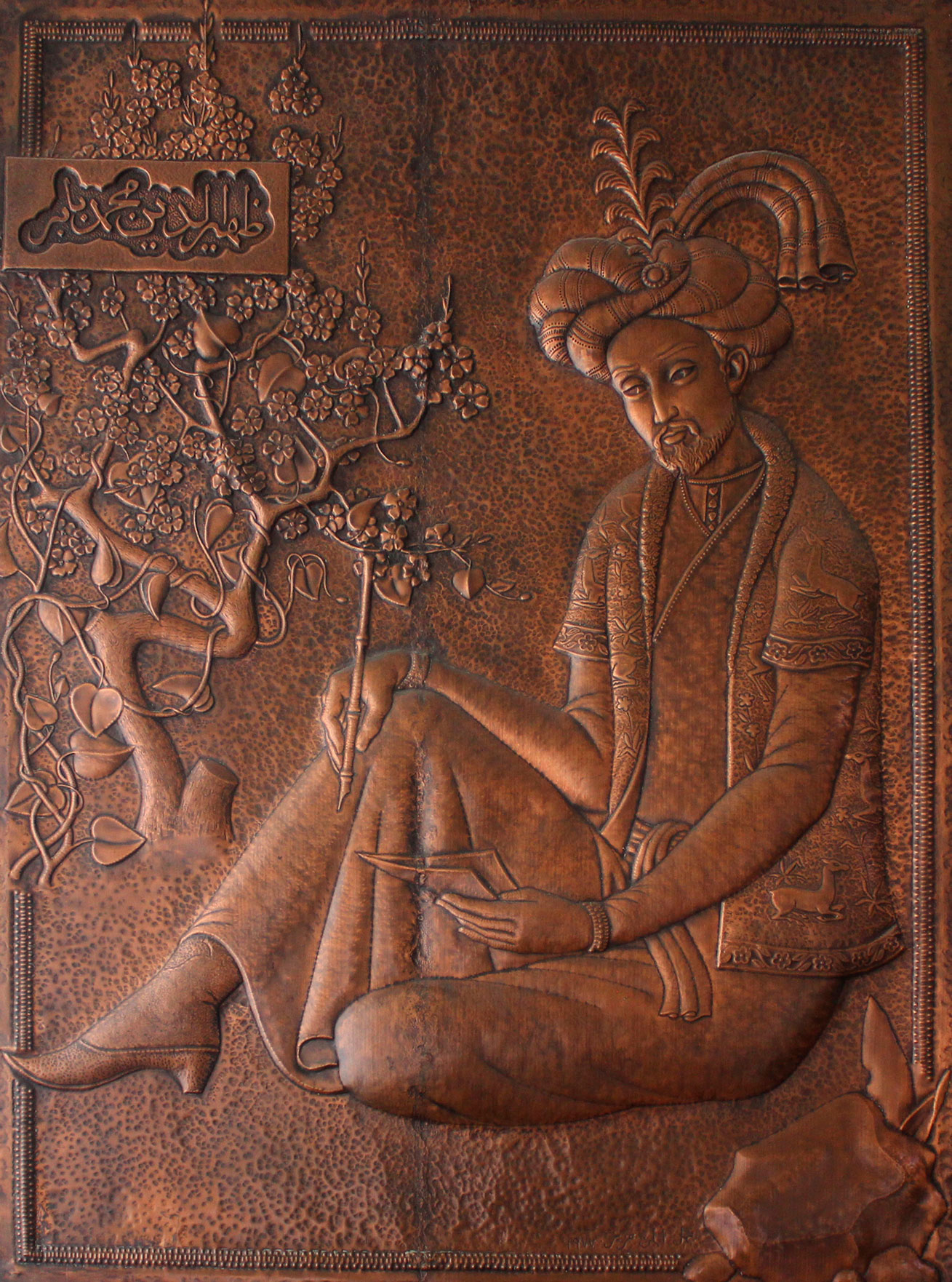
Department VIII:
Uzbek literature in the XVI-XVIII centuries
This period begins with the dynasties that ruled in the sixteenth and eighteenth centuries in the territory of our homeland, maps of the territories subject to them, information about historical processes, cultural, literary life, sayings, defining the attitude of the rulers of those times to literature, written sources.
 Religious, educational, philosophical, aesthetic, historical, artistic roots of Uzbek literature of this period are shown.
Provides information about the literary processes of this period about the authors, historical and literary sources, their content and manuscript sources.
One of the prominent writers of this period was the Kharezm man Muhammad Salih (1455-1535), who first served the Timurid and then transferred to the service of Shaibanihan. His poetic work “Shaibani Name” is dedicated to the history of the State of the Shaibanids.
Ubaidullahan ibn Mahmoud Sultan (1487–1540) wrote under his pseudonym Ubaidi, Ubaidullah, Kul Ubaidi his gazelles, rubai, mesnei, works in other genres. He also wrote his poems in Farsi and Arabic. He created in the form of edification works "Gayrat Name", "Shavk Name", "Kitab ul-Salot." He called poets such as Majlisi, Shaido, Bahri, Sultanali Ubahi to his palace.
Zainiddin Vasifi, who was born in Herat and died in Tashkent, is known as the author of “Badoe st-wakoe” (“Amazing Event”). Born in Harezma and deceased in Herat, Majlisi freely translated from Persian. His free translation of the Kissai Sayf ul-muluk story has long been widespread in Turkestan, the Volga-Ural region.
One of the most beautiful examples of prose of the XVI century are the works of Padshahozha ibn Abdulvahabhodja (1480-1547). He wrote “Miftah ul-adl” (“The Key of Justice”), dedicated to Shaibanihan’s son Timur Sultan, “Gulzor” (1508), dedicated to Balkh ruler Kistan Kara Sultan.
Religious, educational, philosophical, aesthetic, historical, artistic roots of Uzbek literature of this period are shown.
Provides information about the literary processes of this period about the authors, historical and literary sources, their content and manuscript sources.
One of the prominent writers of this period was the Kharezm man Muhammad Salih (1455-1535), who first served the Timurid and then transferred to the service of Shaibanihan. His poetic work “Shaibani Name” is dedicated to the history of the State of the Shaibanids.
Ubaidullahan ibn Mahmoud Sultan (1487–1540) wrote under his pseudonym Ubaidi, Ubaidullah, Kul Ubaidi his gazelles, rubai, mesnei, works in other genres. He also wrote his poems in Farsi and Arabic. He created in the form of edification works "Gayrat Name", "Shavk Name", "Kitab ul-Salot." He called poets such as Majlisi, Shaido, Bahri, Sultanali Ubahi to his palace.
Zainiddin Vasifi, who was born in Herat and died in Tashkent, is known as the author of “Badoe st-wakoe” (“Amazing Event”). Born in Harezma and deceased in Herat, Majlisi freely translated from Persian. His free translation of the Kissai Sayf ul-muluk story has long been widespread in Turkestan, the Volga-Ural region.
One of the most beautiful examples of prose of the XVI century are the works of Padshahozha ibn Abdulvahabhodja (1480-1547). He wrote “Miftah ul-adl” (“The Key of Justice”), dedicated to Shaibanihan’s son Timur Sultan, “Gulzor” (1508), dedicated to Balkh ruler Kistan Kara Sultan.
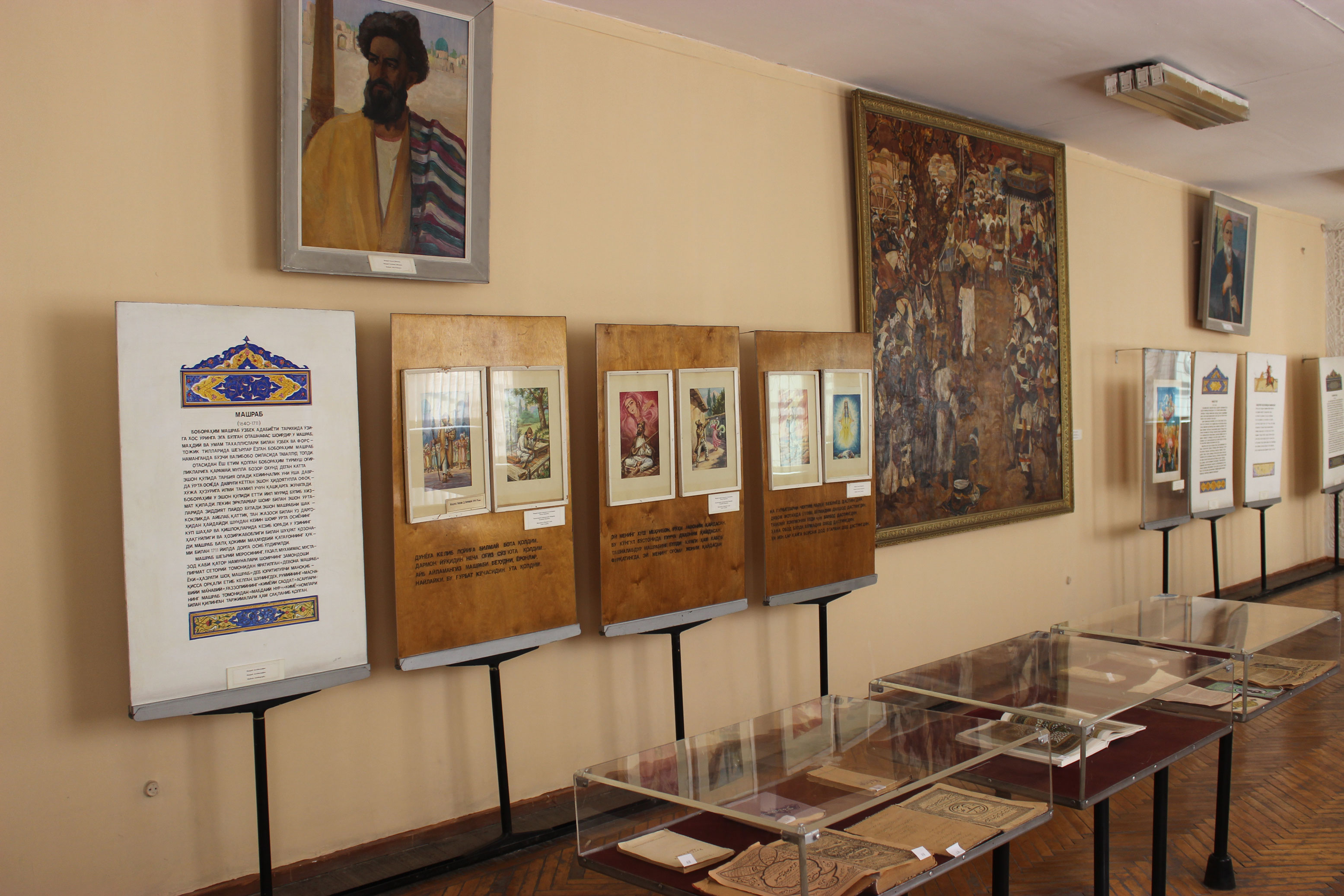 Both of these works consist of forty compact moral-prose stories on the themes of Islam and Sharia, padishah and subordinates, knowledge and enlightenment, the events are mainly taken from oral folklore related to the life of the prophets Noah and Salamon, such historical figures as Alexander, Anushervan, Mahmud of Ghaznavi and in some places verses, whales, rubai, ghazals, openings in other poetic genres are given. Dastan "Maksad ul-atvor" (1514-1520) is dedicated to the uncle of Kistan Karan Zhanibek Sultan and written in imitation of the style of the philosophical and moral dastan Nizami Makhzan ul-asrar.
In the second half of the 16th century, such poets and writers as Nisari, Mushfiki, Nakhli, Mutribi worked. The works “Tazkirat ul shuaro” and “Tarihi Jahongiri” by the poet and Tazkiranavist Mutribi have been preserved. Mushriffy left a rich literary heritage. His satyrs, ghazals and kasyds are assembled into sofas. Nisari (1516-1597) created the Uzbek and Persian couch and was awarded the high title of "Malik wush-shuaro" by Abdullahon I. He created a Tazkir called "Musakkir ul-Akhbob" (1566), in which he gave information about 250 poets. Tazkir was dedicated to the ruler of Iskander Bakhadyrkhan. This Tazkire is considered to be the third after Davltshah Samarkandi’s Tazkirat Wush-Shuaro, Alisher Navoi’s Madjolis Un-Nafois (it was translated into Uzbek and published in 1993).
In the seventeenth century, Turkestan was divided into three khanates, in connection with this the literary environment was divided into three regions.
In Khiva, the traditional lyrics and Tazkir were developed. The historical works “Shazharai Turk” (1660-1661), “Shazharai tarokim” (unfinished) Abdulgazi Bahadirkhan (1603-1664) became excellent examples of traditional Oriental prose. Also known for his medical work is "Manofi ul-inson." Kharezmian Muhammad Khoxar created Muntahib al-lugat (1798), in which he devoted much space to materials of fiction.
“Tazkira” was developed in Bukhara. Four Tazkirs were created: “Tazkirat ush-shuaro” (“Tazkir on poets”) Mutribi (1604-1605), “Muzakkir ul Askhab” (“Mentions of interlocutors”) (Badoe Samarkandi pseudonym Maleho, 1962), “Riyoz ush-shuaro "(Mulla Sadiq Samarkandi, forties of the seventeenth century)," Mazkar ul-musannifi "(Muhammad Nasafi, 1758-1759). In each of the three khanates, one of the types of folk art developed as a folk book. Variants of folk dastans "Tahir and Zuhra", "Ashik Gharib and Shahsan", "Sayyed and Hamro", "Asli and Karam", "Sanobar", "Yusufbek and Ahmadbek", "Alibek and Balibek", "Khurshid and Malikai" were created Dilaram. Poets created a kind of "legends", "stories", reworking materials of oral folk art, and sometimes written sources.
In Khorezm, Umar Baki turned the hamsa dastan into a story. Sayoed reworked the folk sample "Tahir and Zuhra" and created a dastan. Sabir Saykali of Khissar published the Kissai of Shahzod Bahrom and Guland (1785-1786). Turdi Fergani, Sufi Olloor (1616-1706), Babarahim Mashrab (1640-57-1711), Wafoi in Khorezm were prominent representatives of Uzbek literature of the seventeenth century. Turdi lived in the 17th century during the rule of the Ashtarkhanids Nodirmuhammad and his sons Abdulaziz II, Subkhankulihan, in the second half of the 17th century he served in various positions. His 18 poems have reached us almost all about public topics. In his satirical poems, public oppression is condemned. The period of Turdi’s life fell on the period of political, economic, spiritual decline, civil strife and tragedy in the seventeenth century in Turkestan. Therefore, he called on all Uzbek clans to "breadth of the soul" and "equality", fought for the unity of the nation, the calmness of the fatherland.
The conditions of this period led to the strengthening of “Tasawwuf”. On the basis of Turkestan, tasawwuf literature has found its further development. Sufi motifs in the works of Ahsani, Sufi Olloyer, Mashrab, Khuvaydo, Mirhasan Sadoi, Mahzhub Namangani created the main direction of their creativity. Sufi Olloor wrote such works as “Tuchfat ut-tolibin”, “Murod ul-Orifin”, “Maslak ul-muttakin”, “Sabot ul-ozizin”.
And Mashrab gained fame for himself with his fiery love and enlightening poems, resourcefulness, his life full of adventures. A story was created about his life. This story was widely popular among the people under the names "Devonai Mashrab", "Devoni Mashrab", "Hazrati Shoh Mashrab".
In the 18th century, a talented follower of Mashrab was Hojanazar Gayibnazar oglu Huvaido (died 1781-1783). Huvaydo worked in almost all genres of poetry. The dastan “Ibrahim Adham” and the poem “Rohati dil” remained from him. In his works, ideas related to Islamic behavior and philosophy are promoted. His grandson Mavlyavy Sirazhi (died 1817), great-grandchildren Samarbanu (1836-1891), Salahiddin Sahib (1838-1910) created their sofas.
In the fifteenth and eighteenth centuries, ghazals and dastans were written on traditional secular love themes. However, along with tasawvuf, public satire (Wafoi, Turdi, Muzhrim Obid, etc.) intensified. Even satirical “kasyds” were created. For example, in Khorezm, the satirical Kasyda on Redif “Nedur”, “Hanuz” Pakhlavankuli Ravshan (1725-1805) is known. Dastans-fables S. Salahiy “Gul and Bulbul” 1740 were created. Philosophical-allegorical dastan is Nishati “Husnu Dil” (1778). Nurmuhammad Andalib (died 1770) created such mesnevi-poems as “Yusuf and Zuleikha”, “Leyli and Mejnun”, “Zayn ul-Arab”, “Sad Vakkas”.
Both of these works consist of forty compact moral-prose stories on the themes of Islam and Sharia, padishah and subordinates, knowledge and enlightenment, the events are mainly taken from oral folklore related to the life of the prophets Noah and Salamon, such historical figures as Alexander, Anushervan, Mahmud of Ghaznavi and in some places verses, whales, rubai, ghazals, openings in other poetic genres are given. Dastan "Maksad ul-atvor" (1514-1520) is dedicated to the uncle of Kistan Karan Zhanibek Sultan and written in imitation of the style of the philosophical and moral dastan Nizami Makhzan ul-asrar.
In the second half of the 16th century, such poets and writers as Nisari, Mushfiki, Nakhli, Mutribi worked. The works “Tazkirat ul shuaro” and “Tarihi Jahongiri” by the poet and Tazkiranavist Mutribi have been preserved. Mushriffy left a rich literary heritage. His satyrs, ghazals and kasyds are assembled into sofas. Nisari (1516-1597) created the Uzbek and Persian couch and was awarded the high title of "Malik wush-shuaro" by Abdullahon I. He created a Tazkir called "Musakkir ul-Akhbob" (1566), in which he gave information about 250 poets. Tazkir was dedicated to the ruler of Iskander Bakhadyrkhan. This Tazkire is considered to be the third after Davltshah Samarkandi’s Tazkirat Wush-Shuaro, Alisher Navoi’s Madjolis Un-Nafois (it was translated into Uzbek and published in 1993).
In the seventeenth century, Turkestan was divided into three khanates, in connection with this the literary environment was divided into three regions.
In Khiva, the traditional lyrics and Tazkir were developed. The historical works “Shazharai Turk” (1660-1661), “Shazharai tarokim” (unfinished) Abdulgazi Bahadirkhan (1603-1664) became excellent examples of traditional Oriental prose. Also known for his medical work is "Manofi ul-inson." Kharezmian Muhammad Khoxar created Muntahib al-lugat (1798), in which he devoted much space to materials of fiction.
“Tazkira” was developed in Bukhara. Four Tazkirs were created: “Tazkirat ush-shuaro” (“Tazkir on poets”) Mutribi (1604-1605), “Muzakkir ul Askhab” (“Mentions of interlocutors”) (Badoe Samarkandi pseudonym Maleho, 1962), “Riyoz ush-shuaro "(Mulla Sadiq Samarkandi, forties of the seventeenth century)," Mazkar ul-musannifi "(Muhammad Nasafi, 1758-1759). In each of the three khanates, one of the types of folk art developed as a folk book. Variants of folk dastans "Tahir and Zuhra", "Ashik Gharib and Shahsan", "Sayyed and Hamro", "Asli and Karam", "Sanobar", "Yusufbek and Ahmadbek", "Alibek and Balibek", "Khurshid and Malikai" were created Dilaram. Poets created a kind of "legends", "stories", reworking materials of oral folk art, and sometimes written sources.
In Khorezm, Umar Baki turned the hamsa dastan into a story. Sayoed reworked the folk sample "Tahir and Zuhra" and created a dastan. Sabir Saykali of Khissar published the Kissai of Shahzod Bahrom and Guland (1785-1786). Turdi Fergani, Sufi Olloor (1616-1706), Babarahim Mashrab (1640-57-1711), Wafoi in Khorezm were prominent representatives of Uzbek literature of the seventeenth century. Turdi lived in the 17th century during the rule of the Ashtarkhanids Nodirmuhammad and his sons Abdulaziz II, Subkhankulihan, in the second half of the 17th century he served in various positions. His 18 poems have reached us almost all about public topics. In his satirical poems, public oppression is condemned. The period of Turdi’s life fell on the period of political, economic, spiritual decline, civil strife and tragedy in the seventeenth century in Turkestan. Therefore, he called on all Uzbek clans to "breadth of the soul" and "equality", fought for the unity of the nation, the calmness of the fatherland.
The conditions of this period led to the strengthening of “Tasawwuf”. On the basis of Turkestan, tasawwuf literature has found its further development. Sufi motifs in the works of Ahsani, Sufi Olloyer, Mashrab, Khuvaydo, Mirhasan Sadoi, Mahzhub Namangani created the main direction of their creativity. Sufi Olloor wrote such works as “Tuchfat ut-tolibin”, “Murod ul-Orifin”, “Maslak ul-muttakin”, “Sabot ul-ozizin”.
And Mashrab gained fame for himself with his fiery love and enlightening poems, resourcefulness, his life full of adventures. A story was created about his life. This story was widely popular among the people under the names "Devonai Mashrab", "Devoni Mashrab", "Hazrati Shoh Mashrab".
In the 18th century, a talented follower of Mashrab was Hojanazar Gayibnazar oglu Huvaido (died 1781-1783). Huvaydo worked in almost all genres of poetry. The dastan “Ibrahim Adham” and the poem “Rohati dil” remained from him. In his works, ideas related to Islamic behavior and philosophy are promoted. His grandson Mavlyavy Sirazhi (died 1817), great-grandchildren Samarbanu (1836-1891), Salahiddin Sahib (1838-1910) created their sofas.
In the fifteenth and eighteenth centuries, ghazals and dastans were written on traditional secular love themes. However, along with tasawvuf, public satire (Wafoi, Turdi, Muzhrim Obid, etc.) intensified. Even satirical “kasyds” were created. For example, in Khorezm, the satirical Kasyda on Redif “Nedur”, “Hanuz” Pakhlavankuli Ravshan (1725-1805) is known. Dastans-fables S. Salahiy “Gul and Bulbul” 1740 were created. Philosophical-allegorical dastan is Nishati “Husnu Dil” (1778). Nurmuhammad Andalib (died 1770) created such mesnevi-poems as “Yusuf and Zuleikha”, “Leyli and Mejnun”, “Zayn ul-Arab”, “Sad Vakkas”.
Department IX :
Uzbek literature in the nineteenth century
This department contains (map, calligraphy accessories, exhibits, objects, manuscripts, lithographs, pottery samples, clothes, images, photographs, historical monuments in Khiva, Bukhara, Samarkand and Kokand) exhibits in relation to this historical, cultural period and art.
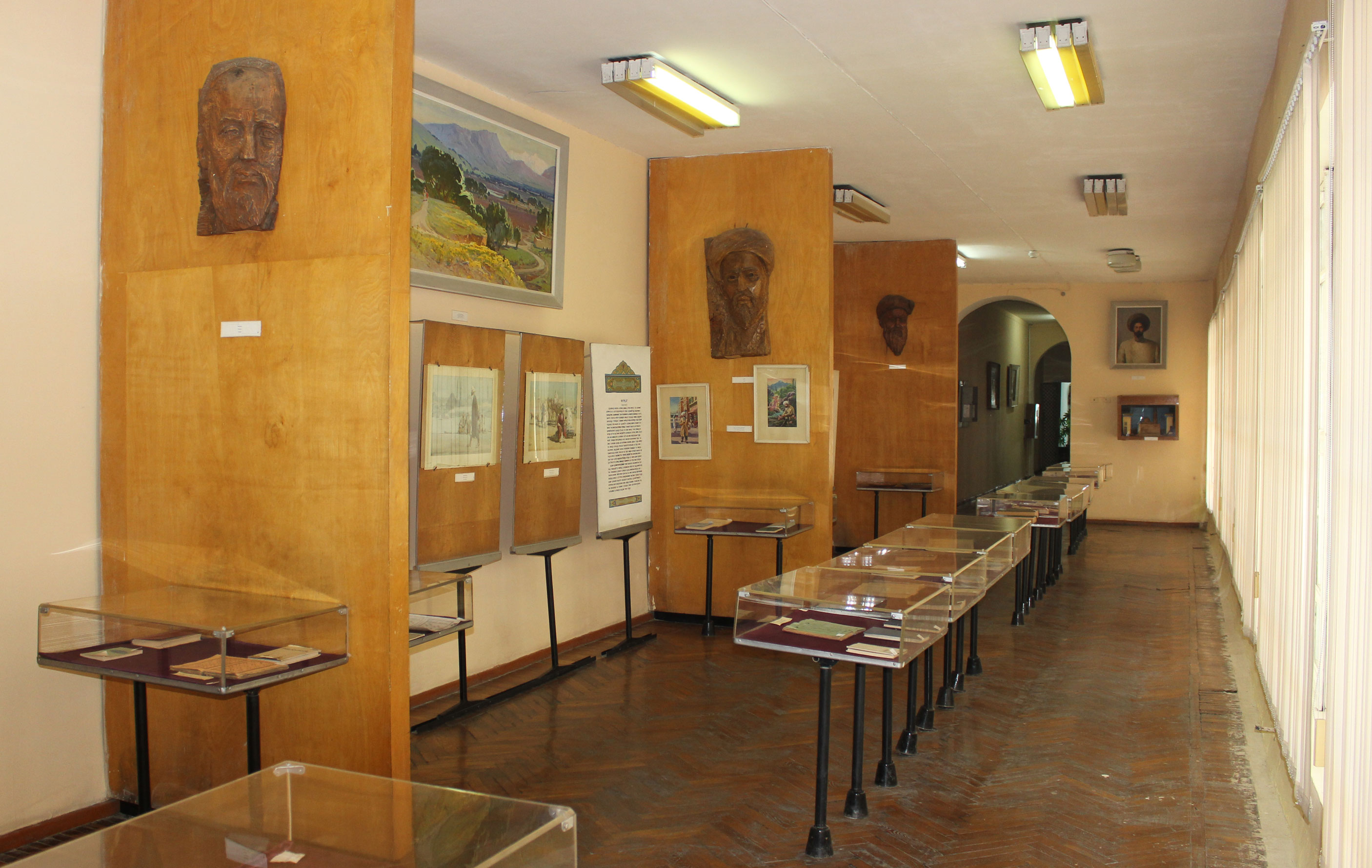 The exposition of the literature of this period tells about talented creators in particular:
- The creators of the Kharezm literary among: Muniz, Agakhi, Tabibi, Razhi, Kamil, Feruz, Baeni, Avaz Utar.
- The creators of the Kokand literary environment: Nizami Hukandi, Sadoi, Gazi, Akmal, Amiri, Nadir, Fazli, Uvaisi, Gulkhani, Makhmur, Azimi, Fano, Khan, Mukimi, Mukhi, Kari, Zavka, Furkat, Mukhsini, Khazini.
The exposition of the literature of this period tells about talented creators in particular:
- The creators of the Kharezm literary among: Muniz, Agakhi, Tabibi, Razhi, Kamil, Feruz, Baeni, Avaz Utar.
- The creators of the Kokand literary environment: Nizami Hukandi, Sadoi, Gazi, Akmal, Amiri, Nadir, Fazli, Uvaisi, Gulkhani, Makhmur, Azimi, Fano, Khan, Mukimi, Mukhi, Kari, Zavka, Furkat, Mukhsini, Khazini.
- From the literary environment of Bukhara and Samarkand Muzhrim Grudges, Mulla Kurban, Hirami, Mirza Sidiki, Munshi, Shavki Kattakurgani, Miri, Khairat and others.
There are separate posters-texts, their works in the modern Latin alphabet, works of modern artists on their famous works, illustrations and paintings, autograph manuscripts, ancient and modern editions of the work, samples of scientific research about the work of poets.
Manuscripts, lithographs and modern editions of such works as Majmuai Shoironi Umarkhoni, Tukhfat ul-Akhbob, Majmoat Ush-shuaroi Feruzshokhi, Tazkirai Kaumi, which are important sources of literature and literary life of this period, are reflected here.
Department X:
Uzbek literature of national revival (Until the first quarter of the twentieth century)
The department reflects the social, economic, political and cultural life of the late nineteenth and early twentieth centuries. The writers and scholars who worked during this period (Mahmud huja Behbudi, Saidahmad Sidki Ajzi, Mirza Khairulla Khukandi, Sufizada, Hamza, Munavvar kari, Alikhantur Saguni, Fitrat, Abdullah Avlani and others) were well aware of the traditions of classical literature, and have a great deal successors and progressive creators.
In their works, the prevailing sentiments of hatred against enslavement, the desire for national freedom, liberation from the swamp of ignorance. And this has led many of them to repression by the totalitarian regime. Therefore, their names were hidden from our people, as well as their spiritual heritage, it was forbidden to remember them. After achieving Independence, these people, who became a victim on the way to freedom, began to speak freely; the opportunity to study their work appeared. This department is created for this purpose.
 Picturesque oil and watercolor paintings, photos, documents, as well as photocopies of manuscripts, posters, provide sufficient information not only about the identity of the writers and their work, but also about the spirituality of that era.
Picturesque oil and watercolor paintings, photos, documents, as well as photocopies of manuscripts, posters, provide sufficient information not only about the identity of the writers and their work, but also about the spirituality of that era.
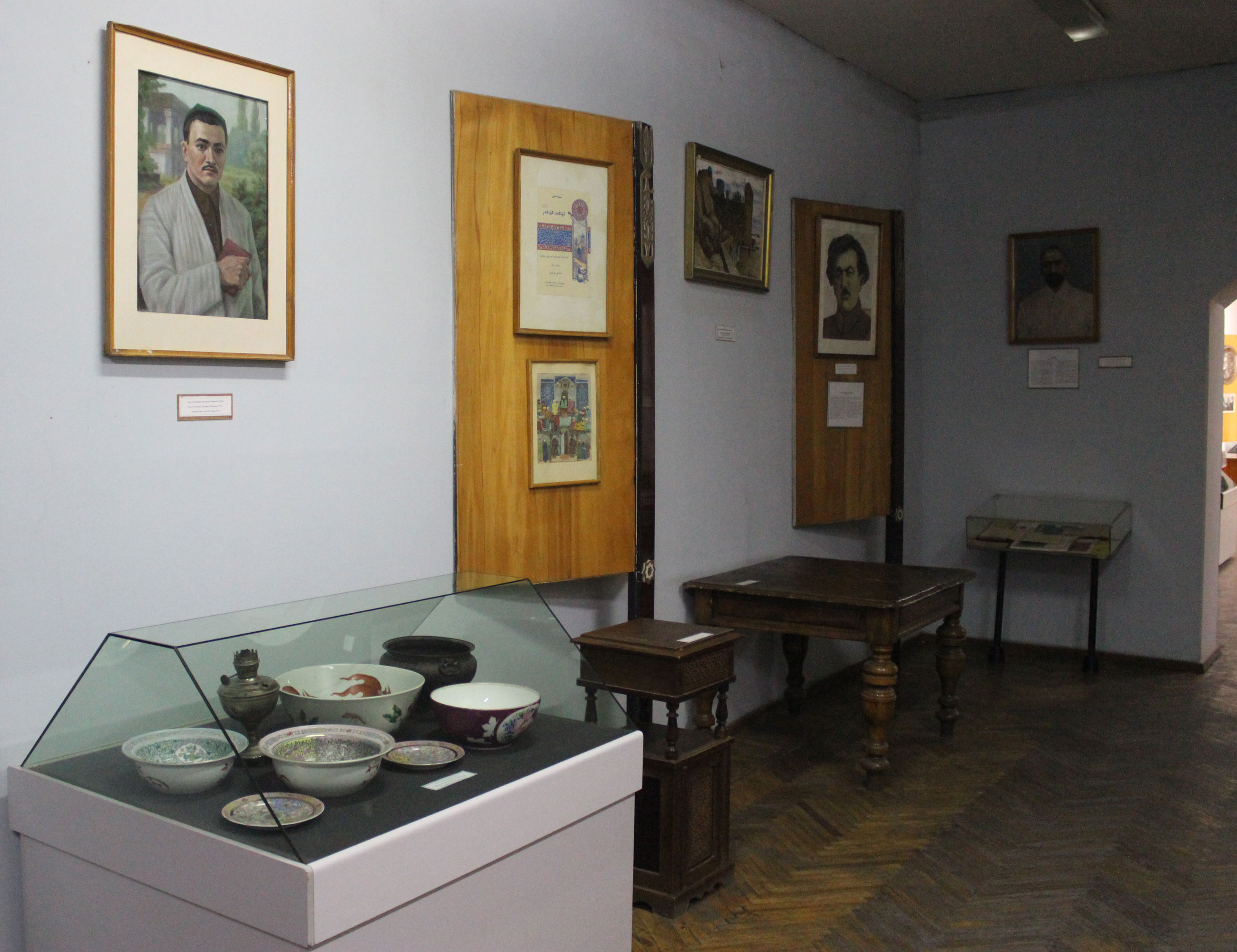 Some creators belonging to this era were very multifaceted. In this section, this factor is also taken into account. In particular, theatrical activities of Chulpan, Hamza and Avloni, literary and aesthetic views of Behbudi and Fitrat are reflected in the exhibits from different angles.
Some creators belonging to this era were very multifaceted. In this section, this factor is also taken into account. In particular, theatrical activities of Chulpan, Hamza and Avloni, literary and aesthetic views of Behbudi and Fitrat are reflected in the exhibits from different angles.
Department XI:
Uzbek literature in the twentieth century (1924-1980)
In the first half of the twentieth century (between 1925-1940) in the development of Uzbek literature in the works of creators such as A. Kadiri, Elbek, Batu, Usman Nasir, the people's struggle for freedom, against the hard part and sinister life of the working people is traced.
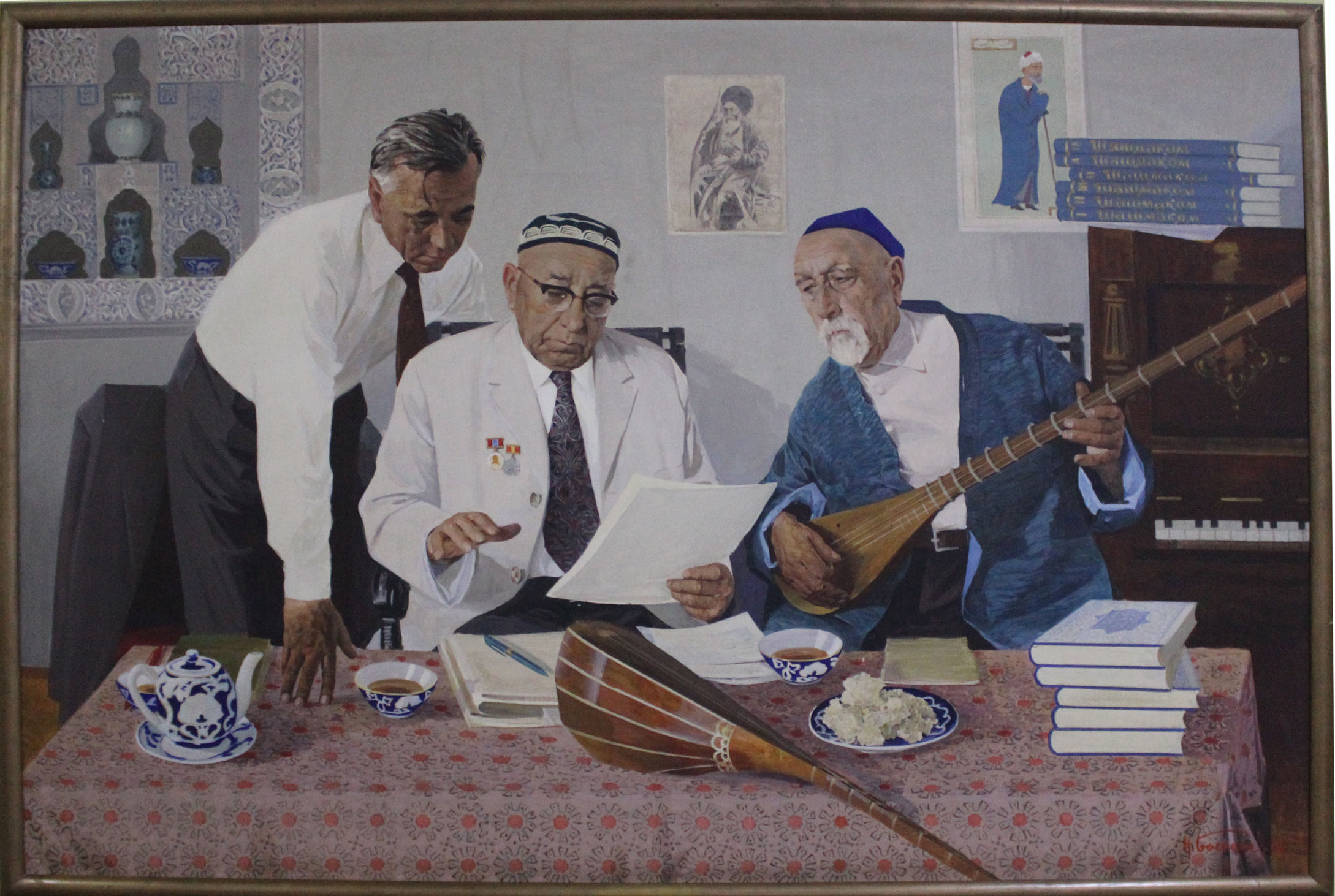 Their work has taken a worthy place in the soul of the people with its truthfulness, honesty, its high artistic level.
Their work has taken a worthy place in the soul of the people with its truthfulness, honesty, its high artistic level.
 During the war, the works of creators such as H. Alimdzhan, Gairati, G. Gulyam, Aibek, Shaikhzoda, A. Kadiri turned into their weapons. In their poems and works of art, they narrated the freedom of their homeland, hatred and anger towards the fascist invaders.
In the post-war period, the works of such writers as Shukhrat, Shukurllo, Said Ahmad absorbed the reflection of the people’s public role, aspirations and hopes.
During the war, the works of creators such as H. Alimdzhan, Gairati, G. Gulyam, Aibek, Shaikhzoda, A. Kadiri turned into their weapons. In their poems and works of art, they narrated the freedom of their homeland, hatred and anger towards the fascist invaders.
In the post-war period, the works of such writers as Shukhrat, Shukurllo, Said Ahmad absorbed the reflection of the people’s public role, aspirations and hopes.
 E.Vokhidov, U.Umarbekov, A.Aripov, U.Hashimov, Sh.Halmirzaev, who by their creative work propagandized the ideas of our social life, innovation of the young, love, loyalty, friendship, came to the Uzbek literature of the late 50s. And in the late 70s M.Ali, A.Suyun, U.Azimov, H.Sultanov, whose works along with the propaganda of the idea of independence, reflected such high qualities as patriotism, heroism, friendship, love, came to it.
E.Vokhidov, U.Umarbekov, A.Aripov, U.Hashimov, Sh.Halmirzaev, who by their creative work propagandized the ideas of our social life, innovation of the young, love, loyalty, friendship, came to the Uzbek literature of the late 50s. And in the late 70s M.Ali, A.Suyun, U.Azimov, H.Sultanov, whose works along with the propaganda of the idea of independence, reflected such high qualities as patriotism, heroism, friendship, love, came to it.
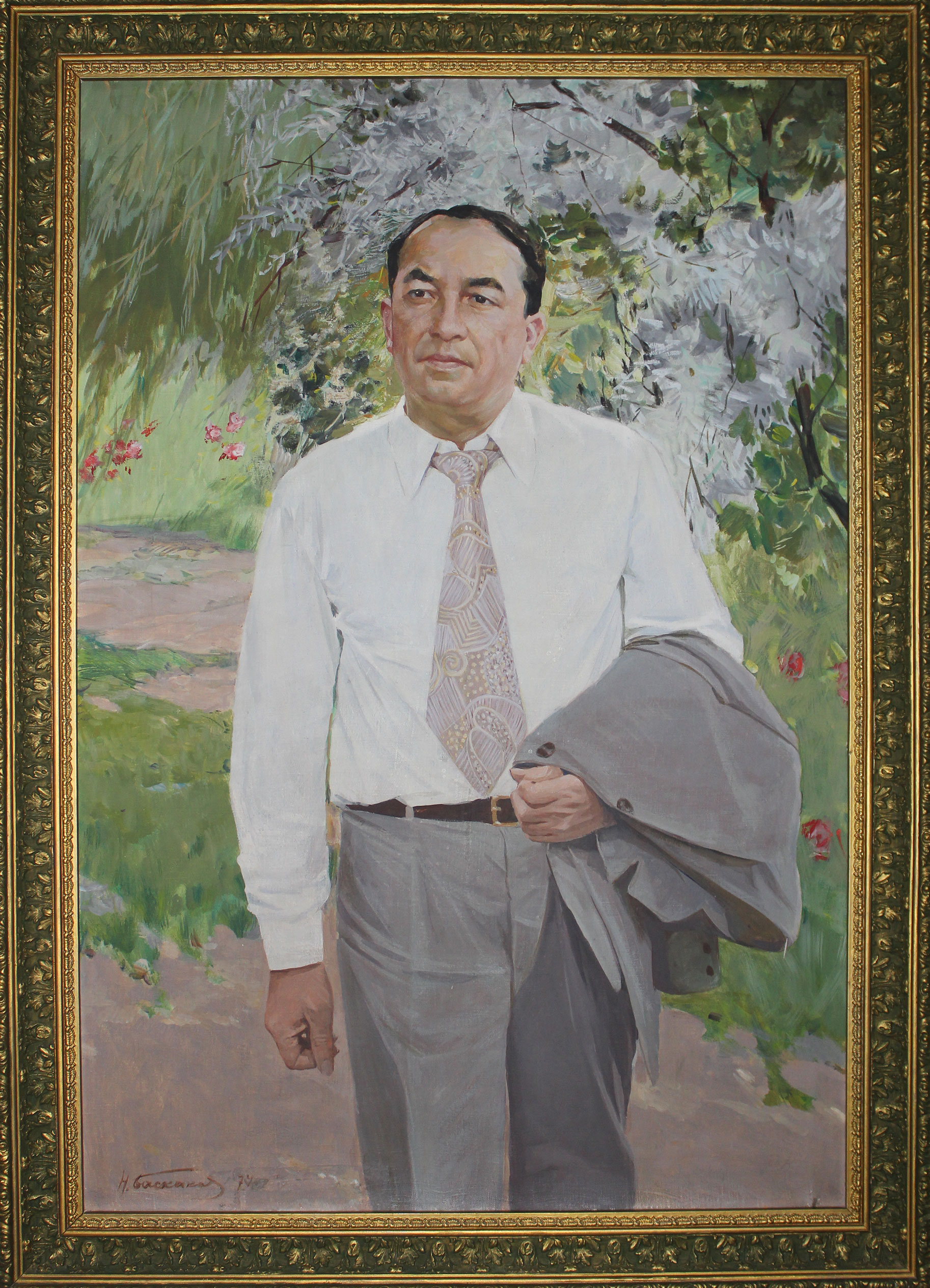 In this department there are exhibits of the writers and everyday life that they used (personal belongings, portraits, photos, and others).
In this department there are exhibits of the writers and everyday life that they used (personal belongings, portraits, photos, and others).
Department XII:
Literature of the Independence Period (From 1991 to today)
During the Independence period, attitudes toward literature changed radically, that is, fiction was freed from ideological pressure, and state attention was also paid to it. This situation is reflected in the decisions and decisions of the head and the government of the republic. The exposition of the museum displays texts of the Decree of the President of our Republic Sh.M. Mirziyoyev “On the culture of reading books, literature and art”, as well as his thoughts on literature and spirituality, which were presented on August 3, 2017 at a meeting with creative intelligentsia. The period of independence was a period of creative growth for writers of all genres. During this period, writers freed from ideological pressure began to write freely. A striking example of this is the work of such writers as Abdulla Oripov, Erkin Vakhidov, or scholars of literature as Ozod Sharafiddinov. Some writers were awarded international prizes. The basis of this is a special attention to the literature in our republic. This circumstance is especially noticeable over the past two years. Of particular importance is the decision signed by the President of our homeland Sh. Mirziyoyev “On measures to improve the activities of the Writers' Union of Uzbekistan (April 5, 2018)”. In this Resolution, along with events related to the Writers' Unions, the High Courses of Literature are also mentioned. In addition, the adoption by the government of our republic of the Ordinance on the holding of an international conference "Study of Uzbek Literature in Abroad" is a vivid example of great attention to literature in our republic. Literary links and literary translation are steadily developing in our country. A vivid example of this is the broad celebration of the anniversary of the famous Kyrgyz writer Chingiz Aimatov.

